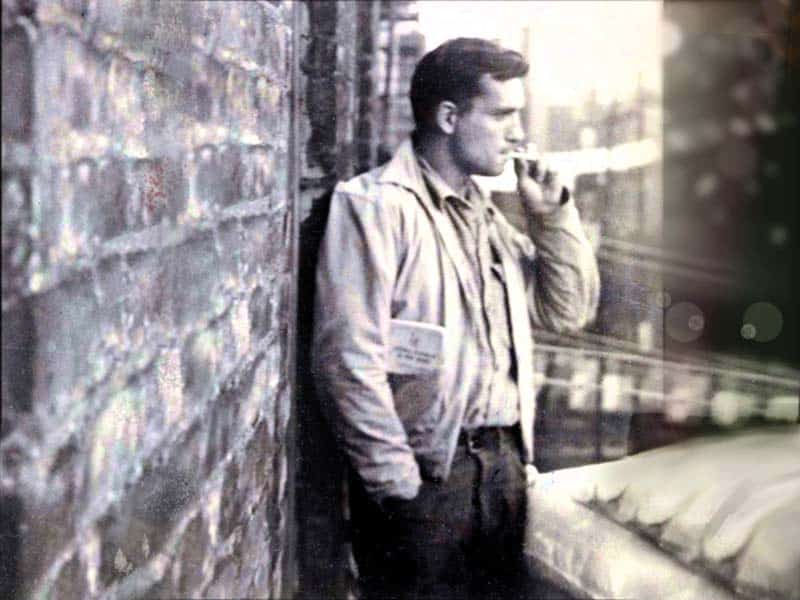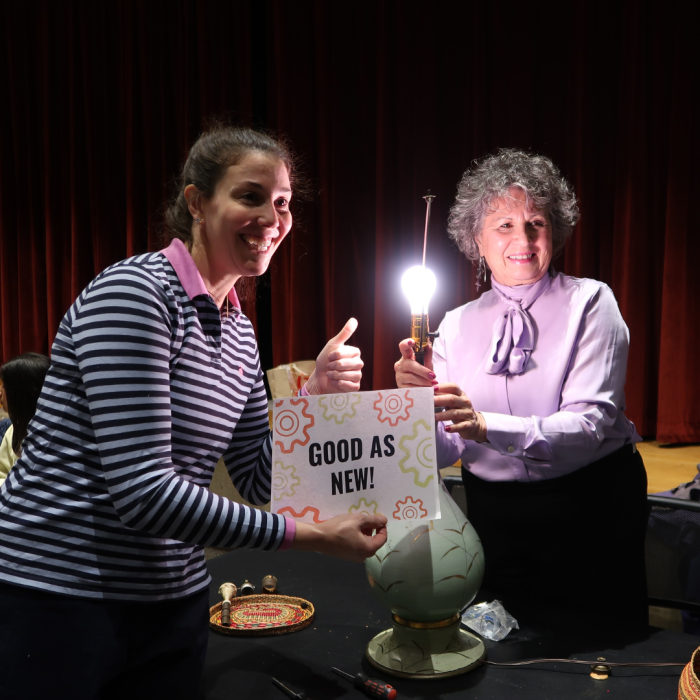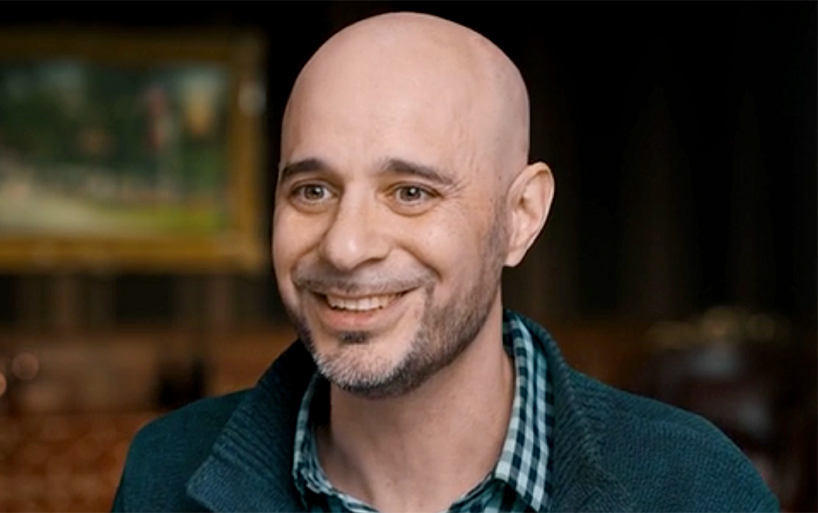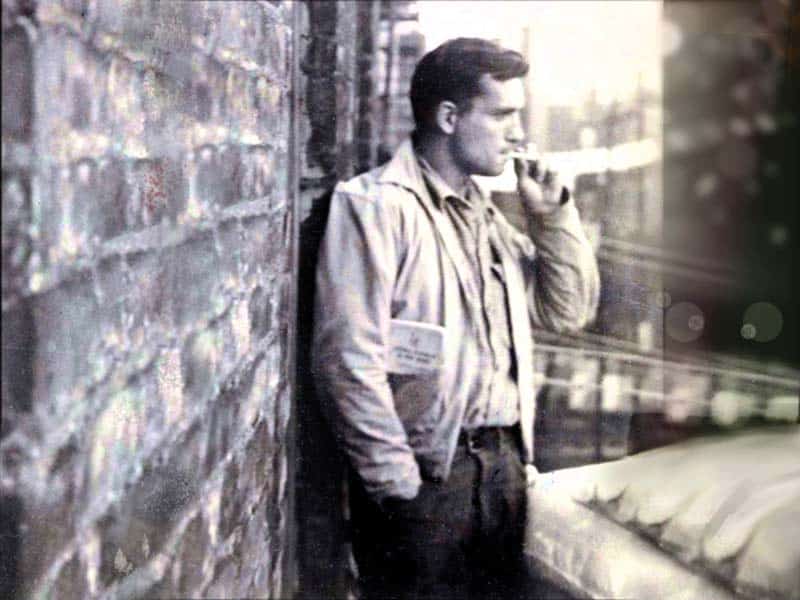
People don’t associate Jack Kerouac with Long Island. The latter, in the postwar era, became the symbol of suburbia. Kerouac’s 1956 novel, On The Road, on the other hand, became the voice of postwar restlessness. The novel celebrated the nation’s endless opportunity for adventure, not through steamboat or train travel, but through the automobile. It was the right novel at the right time.
On The Road made Kerouac famous. However, at age 36, the road had long run out of pavement. He was divorced from his second wife and estranged from his daughter. When On The Road was published, Kerouac was living with his mother in Orlando, FL. After publication, the two relocated to New York. Kerouac’s friends were in New York, as was his publisher. Kerouac, who struggled with alcoholism, couldn’t function under Manhattan’s bright lights. The man needed privacy. And so, he sought refuge in Northport, a village of 8,000 in Suffolk County. At first, he couldn’t escape fandom there, either. Or as he complained in Big Sur:
Teenagers jumping the six-foot fence I’d had built around my yard for privacy—Parties with bottles yelling at my study window “Come out and get drunk, all work and no play makes Jack a dull boy!”—A woman coming to my door and saying “I’m not going to ask you if you’re Jack Duluoz because I know he wears a beard, can you tell me where I can find him, I want a real beatnik at my annual Shindig party”—Drunken visitors…stealing books and even pencils—Uninvited acquaintances staying for days because of the clean beds and good food my mother provided.
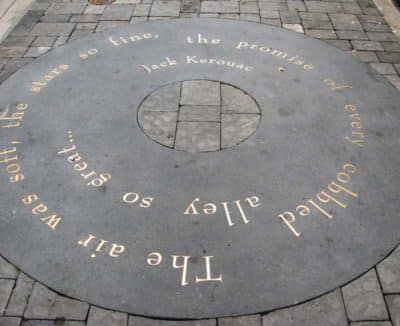
Wreckage aside, Kerouac liked Northport. He lived modestly in a house near the high school football field. It reminded him of his own glory days as a high school football star at both Lowell High School and later, at Horace Mann Prep in New York City. He also needed to work. Kerouac had to live up to his standing as “King of the Beats.” That wasn’t his intention. With his autobiographical Duluoz Legend canon (12 novels in all), Kerouac saw himself writing in the tradition of Balzac or Flaubert. He looked forward to the day when his novels would be lined up on a shelf, the legend completed, a life well-lived.
No writing career comes to a happy ending. This, too, was Kerouac’s sad case. The novelist lived in Northport for six years. The early fame drove him to a temporarily respite in northern California, where he wrote Big Sur, a 1962 novel, one that announced the end to a vagabond life. During his time on Long Island, Kerouac published seven books, but only two Lonesome Traveler (1960), plus Big Sur were written during this period. Others, including such pearls as Tristessa and Visions of Gerard were written in that amazingly creative period from 1951 to 1957, when On The Road remained unpublished and Kerouac was writing at top speed. The bulk of Desolation Angels (1965), Kerouac’s last major work of fiction, was also written during the Northport years.
Kerouac may have been a failed husband and father, but he did have a gift for friendship. Plus, the locals were impressed that a famous writer, a prophet of a new age, would choose their little village to live in. Kerouac scouted out the local establishments and found refuge in Gunther’s, an establishment on Main Street. The man left his mark. Years later, Patrick Fenton, a Massapequa-based playwright, teamed with award-winning audio dramatist Sue Zizza to produce Jack’s Last Call, a play about Kerouac’s final night on Long Island, one narrated by Canadian actor Len Cariou, longtime star of Blue Bloods. The play depicts a melancholy Kerouac reminiscing about his glory days with Cassady, only to be interrupted from his daydream with phone calls from his daughter, Jan, who as one might imagine, wants to know her real father.
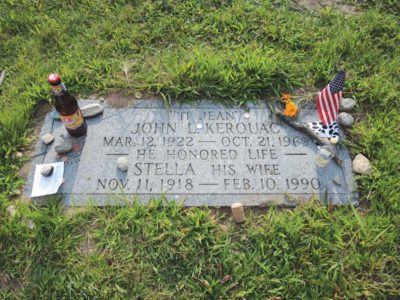
Kerouac’s friends and neighbors have fond memories of the man. As a cultural celebrity, he was under siege, but as a lifelong athlete, Kerouac enjoyed Saturday pickup softball games, where he could show off his still-considerable skills. By the 1960s, the times were set to pass him by. The Beatniks craze was the 1950s thing, something Kerouac was always wary of, especially portrayals of such individuals as criminals, a caricature that offended him deeply. Kerouac’s friends had moved on. Neal Cassady, the model for Dean Moriarty, was caught in Ken Kesey’s madcap crowd, the bus driver celebrated in Tom Wolfe’s 1968 book, The Electric Kool-Aid Acid Test, itself a Sixties-style send-up of On The Road. Allen Ginsberg found greater fame as a poet, moving effortlessly from the Beat to hippie era. Kerouac didn’t want to go back on the road with Cassady. Nor did he sign on to Ginsberg’s antiwar activism and counterculture celebrations. Cassady and Ginsberg’s worlds now included the drug culture, something Kerouac didn’t need at all. In 1964, it was back to Florida, this time to St. Petersburg, where he married an old girlfriend from Lowell, and wrote his final novel, Vanity of Duluoz about his misspent youth in New York and in the U.S. Navy. His final testament was an essay, “After Me, The Deluge,” a shell-shocked look at the ever-maddening American scene. “I think I’ll drop out—Great American tradition—Dan’l Boone, U.S. Grant, Mark Twain.” In 1968, Cassady died at age 42. A stunned Kerouac was disbelieving. A year later, as the nation hurtled through another tumultuous year, Kerouac’s liver gave out. He died at age 46 on Oct. 21 in St. Petersburg.
Kerouac has enjoyed a remarkable literary life after death revival. For decades, he has been one of America’s top-selling authors. At last count, On the Road has sold more than 4 million copies in the United States. Its publisher, Viking, reaps the benefits of a paperback version that sells 100,000 copies annually. Biographies, letter collections, photo albums and reminiscences from friends, colleagues and scholars continue be published. This fall, there will be Kerouac celebrations nationwide. In Northport, it is Jack Kerouac, friend and neighbor, who is remembered most fondly.




